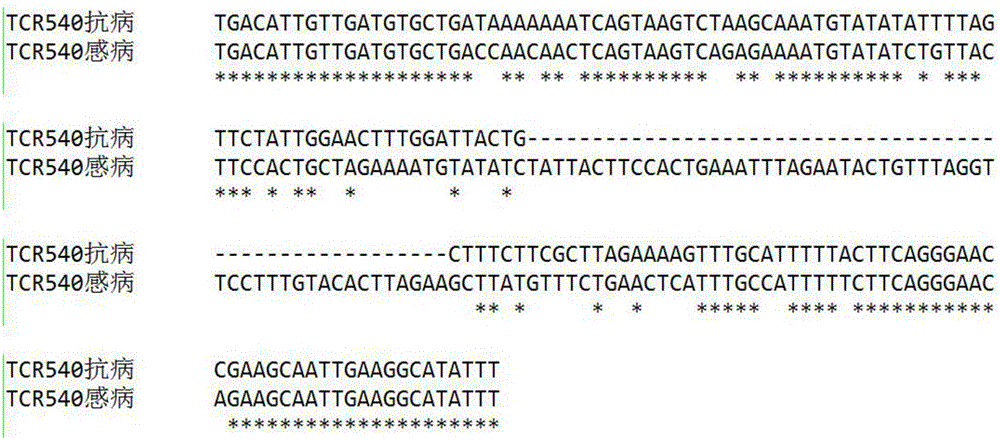Co-separation molecular marker TCR540 of clubroot resistant CRb gene of Chinese cabbages, primers and application
An anti-clubroot, molecular marker technology, applied in the determination/inspection of microorganisms, biochemical equipment and methods, DNA/RNA fragments, etc., can solve problems such as chain burden, and achieve the effect of shortening the breeding process and improving the breeding efficiency.
- Summary
- Abstract
- Description
- Claims
- Application Information
AI Technical Summary
Problems solved by technology
Method used
Image
Examples
Embodiment Construction
[0027] The present invention will be described in detail below with reference to the drawings and specific embodiments, but it should be understood that the protection scope of the present invention is not limited by the specific embodiments.
[0028] 1. Acquisition of co-segregation molecular markers TCR540 and TCR541 of Chinese cabbage clubroot resistance CRb gene
[0029] 1. Construction of isolated groups
[0030] F 1 , the obtained F 1 All the offspring plants showed resistance to the disease. The above two parents 'CRBJN3-2' and 'BJN3-2' are preserved in Shenyang Agricultural University. Select individual plant F 1 selfing build F 2 There are 4,783 groups in the mapping group. All 4783 Fs Seeded 2 Groups were inoculated with Plasmodium 10 days after planting. After 40 days for disease resistance identification, 4783 F 2 In the population, 3641 were resistant and 1142 were susceptible, and the chi-square test met the segregation ratio of 3:1
[0031] 2. DNA ex...
PUM
 Login to View More
Login to View More Abstract
Description
Claims
Application Information
 Login to View More
Login to View More - R&D
- Intellectual Property
- Life Sciences
- Materials
- Tech Scout
- Unparalleled Data Quality
- Higher Quality Content
- 60% Fewer Hallucinations
Browse by: Latest US Patents, China's latest patents, Technical Efficacy Thesaurus, Application Domain, Technology Topic, Popular Technical Reports.
© 2025 PatSnap. All rights reserved.Legal|Privacy policy|Modern Slavery Act Transparency Statement|Sitemap|About US| Contact US: help@patsnap.com



